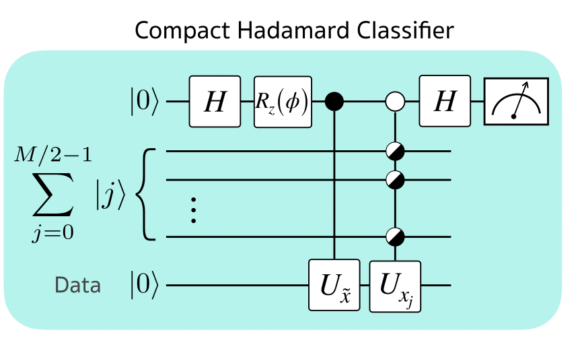My first paper with Stellenbosch University affiliation was published in Quantum Science and Technology.

Abstract: Quantum computing opens exciting opportunities for kernel-based machine learning methods, which have broad applications in data analysis. Recent works show that quantum computers can efficiently construct a model of a classifier by engineering the quantum interference effect to carry out the kernel evaluation in parallel. For practical applications of these quantum machine learning methods, an important issue is to minimize the size of quantum circuits. We present the simplest quantum circuit for constructing a kernel-based binary classifier. This is achieved by generalizing the interference circuit to encode data labels in the relative phases of the quantum state and by introducing compact amplitude encoding, which encodes two training data vectors into one quantum register. When compared to the simplest known quantum binary classifier, the number of qubits is reduced by two and the number of steps is reduced linearly with respect to the number of training data. The two-qubit measurement with post-selection required in the previous method is simplified to single-qubit measurement. Furthermore, the final quantum state has a smaller amount of entanglement than that of the previous method, which advocates the cost-effectiveness of our method. Our design also provides a straightforward way to handle an imbalanced data set, which is often encountered in many machine learning problems.
